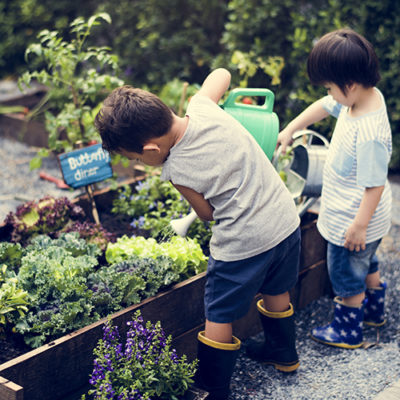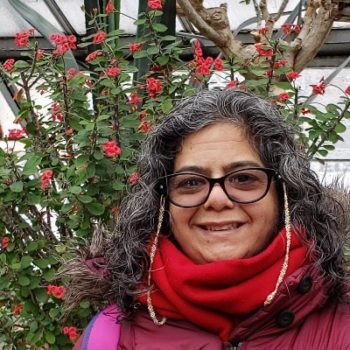Race and Nature
in the City
Engaging Youth of Colour in Nature-Based Activities
A Community-based Needs Assessment for Nature Canada
Introduction
Nature Canada’s Race and Nature in the City report provides an evidence-based, community-informed needs assessment and makes recommendations for meaningfully engaging racialized communities in nature and nature-based programming in urban areas.
The research was commissioned in early 2020 to inform and guide Nature Canada and our partners in the work of incorporating anti-racism and equity in all of our programming. Much of the fieldwork occurred in the context of worldwide protests in solidarity with the Black Lives Matter movement in response to the police killing of George Floyd and Breonna Taylor, and the racial profiling of Christian Cooper, a Black birdwatcher in Central Park, New York.
It is critical for all nature groups to incorporate anti-racism and equity work in their programming and Race and Nature in the City provides practical and timely steps to support that work.

Current State of Knowledge
Canada’s population is increasingly multicultural and increasingly urban, in line with a global trend that raises concern about a spreading human disconnect from nature, especially among young and racialized communities.
In Toronto, where this research was conducted, more than half of the 6.2 million residents are racialized. The Greater Toronto Area has the highest Black population in Canada (350,000) including 100,000 youth.
Traditional studies focused on ethnic communities’ socio-economic status and cultures to explain their lower rates of participation in sports, leisure and recreation activities compared to white-majority populations. Some studies also recognized other barriers including lack of information about facilities and activities, poor signage in nature areas, language barriers, and fear of crime and racial prejudice or attack.
However, a national survey by Mountain Equipment Coop in 2018 found greater participation by people of colour than white people in outdoor recreation. MEC started to show diverse models in its advertising that year.
Current researchers focus on systemic barriers and call for the creation of more diverse cultural spaces. Our research asks: what should be done when nature space is perceived as white space? And what can be done when nature is perceived as wilderness outside of urban settings?
Methodology
The research for this report centred on focus groups, interviews, lived experience case studies and significant literature review. The primary authors and researchers were Jacqueline Scott, a Black Ph.D. candidate in Social Justice Education and Ambika Tenneti, a South Asian Ph.D. candidate and environmental scientist. Both are avid nature lovers with a passion for community engagement.
Interviews
Two Indigenous leaders involved in environmental education programs were interviewed for an hour each about bringing Indigenous knowledge into urban programs and using urban nature to bridge Indigenous and immigrant communities. Catherine Tàmmaro is a Wyandot multi-disciplinary artist. Rebecca Beaulne-Stuebing is a member of an Indigenous Land Stewardship Circle project.
Focus Groups
Focus groups were recruited by community organizations which work with youth of colour and have a social justice orientation. There were four one-hour focus groups with an average of 10 participants each, ranging from age 14 to 24, high school to university, male and female, Muslim and Christian. Most of them lived in apartments.
Recommendations
Most of the recommendations in Race and Nature in the City can be grouped under one of three themes:

Increase racial diversity in communications.

Promote urban nature and increase access for racialized youth.

Increase comfort in nature through guided activities and education.

Increase Diversity in Communications
“The lack of people of colour in nature organizations, social media feeds and publications, reinforces the whiteness of the space.”
- Showcase racialized youth and experts in communications material and social media.
- Profile racialized people working in nature and the environmental sector. Role models for students may influence their path of studies, career choices, volunteer, and leisure activities.
Promote Urban Nature
“Urban landscapes must not be seen as inferior to wilderness landscapes.”
- Increase partnerships with agencies serving racialized urban communities.
- Develop urban ecology programs that reflect a variety of worldviews of what constitutes nature and incorporate principles of Indigenous land stewardship.
- Present urban nature such as city parks and community gardens as just as valid for engagement as wilderness landscapes.
- Design drop-in programs emphasizing that nature is fun and a part of life in the city. Examples are nature-based films, guided walks, plant and seed distribution and workshops, games for children and families.
- Associate outdoor nature activities with BBQs or other food preparation and sharing to build community.
- To support your organizational capacity to develop partnerships with organizations serving diverse youth check out our latest Partnership Toolkit: Helping Environmental not for profit organizations partner with organizations serving diverse youth.


Increase comfort level when in nature through guided activities and education
“For visibly Muslim youth, the fears were around their dress or wearing hijabs. For Black youth, the fear was around their skin colour.”
- Address fear of encountering racist comments or physical attack by increasing diversity in media representation and hiring people of colour to lead outings.
- Address fear of nature, such as ticks, raccoons, and poison ivy, through education in guided walks and published materials.
- Increase confidence about being in nature through walks, hikes and field trips guided by people of colour or led by Indigenous people.
- Link volunteering in community gardens to civic education service hours.
- Take cultural preferences about outdoor space and cleanliness into account when organizing programs.


